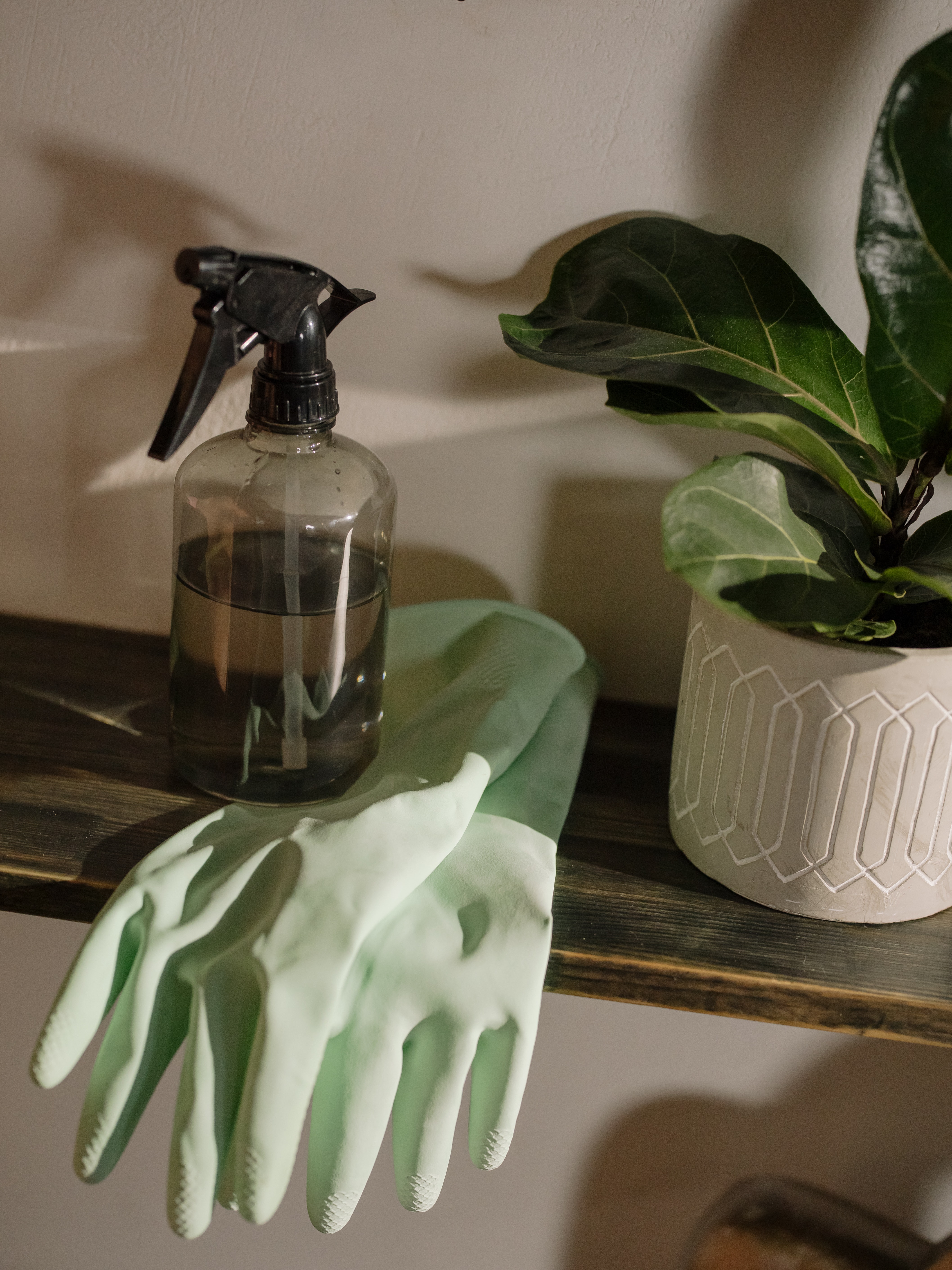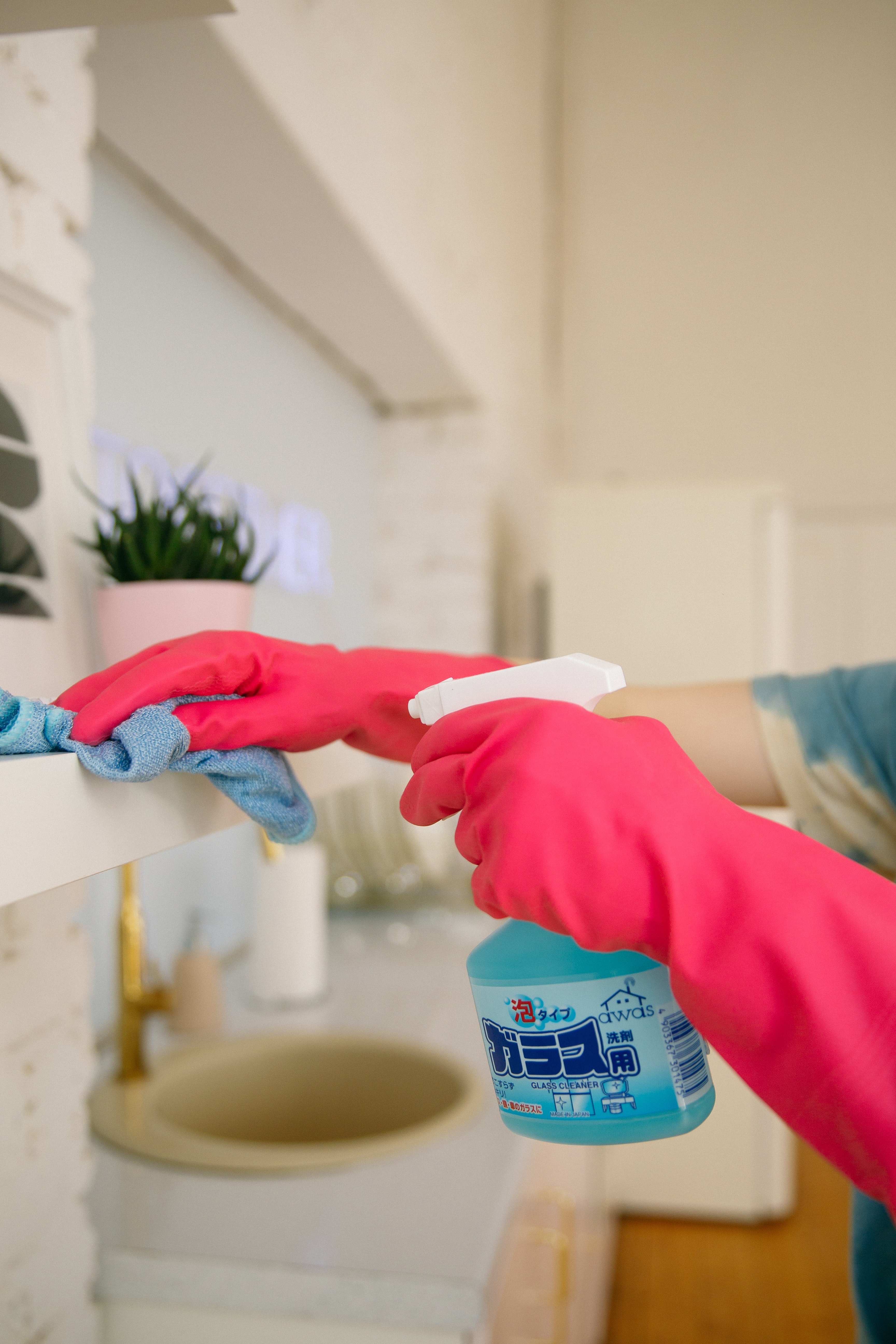Personal Hygiene: How To Use Vinegar As A Disinfectant

A creative writer with a voracious appetite for fashion, beauty,…
With the random outbreak of diseases around the world, it’s obvious that one has to take extra precautions when it comes to hygiene. If not, one minute you’re jamming to your favorite song, and the next, you’re all wired up in a hospital bed. Yes, it’s that dramatic. As hand sanitizers have reached celebrity status, it’s become a little pricier than they used to be prior to the pandemic, and it would certainly be unnecessary to use them when cleaning up the home space.
There are items lying in the kitchen cabinet that can do wonders in the cleaning department, and one of such is vinegar. That’s right, vinegar as a disinfectant is highly effective. They can act as a disinfectant that destroys some bacteria and viruses. That being said, it hasn’t been scientifically proven that vinegar kills the Covid-19 virus hence, don’t relent on washing your hands with soap and running water. Vinegar is famously used during food preparation, however, they undoubtedly pack a punch when it comes to cleaning and vanquishing tough stains.
Vinegar as a disinfectant? This should be interesting…
Preparation & how to use

Usually, when it comes to preparing vinegar for cleaning purposes, a 1:1 ratio of water to white vinegar is advised. Simply mix up the two and then pour them into a spray bottle for ease of use. Use this solution on sinks, stovetops, windows, walls, cupboards, and floors to avoid the spread of germs around the home.
Do I have to be careful when using vinegar as a disinfectant?

Of course! The acetic acid in the vinegar helps to wipe out some germs, but can also damage some surfaces. For example, surfaces such as aluminum, granite, marble countertop, and waxed wood can easily be damaged by vinegar. Also, be extra careful when using it on surfaces that directly harbor food like refrigerators and cutting boards. If however, you must, you’ll certainly need to diffuse its effect with soapy water thereafter.
Asides from surfaces, vinegar can be used to revive stained pots and pans. Simply soak them in a mixture of a small cup of vinegar and a gallon of water for 30 minutes, after which you rinse in warm soapy water.
Bonus tips:
- If you are in for an entire vinegar house cleaning day, you might have to find an alternative place to wait out the strong smell, especially if you or anyone around is sensitive to its very domineering presence.
- We know it gets exciting and you might want to channel your inner Dexter but please do not mix vinegar with bleach or hydrogen peroxide as the result is dangerous. DO NOT ATTEMPT IT!!!
Featured image: Max Vakhtbovych | Pexels
For the latest in fashion, lifestyle and culture, follow us on Instagram @StyleRave_
This is a Style Rave original content exclusively created for our readers. If reproduced, distributed, transmitted, cached, or otherwise used by any other publishing house or blogs, such use should provide a direct link to this source article. Use of and/or registration on any portion of this site constitutes acceptance of our Terms & Conditions and Privacy Policy.
—Read also
A creative writer with a voracious appetite for fashion, beauty, lifestyle and culture. As one who's passionate about the advancement of the woman, creating content that inspire smart style and living, and positive lifestyle changes is a calling I take seriously. At Style Rave, we aim to inspire our readers by providing engaging content to not just entertain but to inform and empower you as you ASPIRE to become more stylish, live smarter and be healthier. Follow us on Instagram @StyleRave_ ♥






